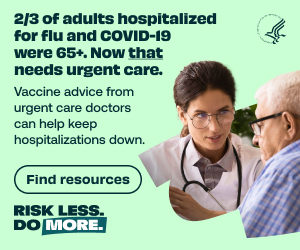Dr. Chris Carpenter speaks with Art Sanders, MD, one of the authors of ‘Chest compression-only CPR by lay rescuers and survival from out-of-hospital cardiac arrest’ (JAMA 2010)
Dr. Chris Carpenter speaks with Art Sanders, MD, one of the authors of ‘Chest compression-only CPR by lay rescuers and survival from out-of-hospital cardiac arrest’ (JAMA 2010)
EPM: The SHARE initiatives have demonstrated impressive success with changing provider behavior in a relatively short period of time. Knowledge Translation and Implementation Science leaders struggle to modify clinicians’ diagnostic and therapeutic approaches with the average delay between publication of practice-changing research to routine bedside application about 10 years. How did you accomplish so much so quickly and what lessons would you impart to EM colleagues endeavoring to change clinician (or patient) behavior in years to come?
Dr. Art Sanders: The Resuscitation Research Group of the Sarver Heart Center at the University of Arizona has been involved in research with the goal of improving survival from cardiac arrest for over 30 years. Until 2000, our efforts have focused on understanding the physiology of resuscitation and trying to improve the techniques. In 2003 we reviewed the survival data for patients in Arizona and concluded that it was unacceptably low. Our group felt that the American Heart Association guidelines were not optimal and that we could improve survival by using new approaches based on the laboratory research we did for 20 years. Dr. Ben Bobrow, the EMS Director for Arizona, agreed that we could achieve better survival and joined the Group led by Gordon Ewy. Ben worked very hard to develop the SHARE database understanding that “if you can’t measure it, you can’t improve it.” As a multidisciplinary group we understood that out-of-hospital cardiac arrest is a Public Health problem. As such, improvement in survival will come, not from randomized clinical trials as mandated by the AHA, but rather using Quality Improvement Principles. We instituted changes in the system based on scientific evidence and closely monitored its effects on outcomes. Our plan was to approach OOHCA in multiple phases – improve bystander CPR by simplifying it to COCPR, improve the EMS protocol (Cardiocerbral Resuscitation also known as Minimal Interrupted Cardiac Resuscitation) and optimize hospital care through designated Cardiac Arrest Centers.
EPM: Regarding COCPR, the results seem almost too good to be true. Do your results reflect a lack of effectiveness for conventional CPR? Is it possible that the time taken for ventilations made conventional CPR ineffective? If COCPR is truly superior, as your results would indicate, how does circulating deoxygenated blood improve cerebral outcomes?
Sanders: In my opinion, the main problem with conventional CPR is that too little time is spent for chest compressions and too much on ventilation, which may be harmful during the early phases of cardiac arrest. During a non-ventilatory caused arrest, the blood is oxygenated and chest compressions are needed for the first 5-8 minutes. Also during chest compressions, some ventilation occurs until EMS arrives. More importantly, our data show that more bystanders will do the simpler form of COCPR. The rate of lay rescuer CPR increased from 28% to 40% over 5 years. COCPR is an easier skill to learn and retain when needed in an emergency situation. In my opinion, the key scientific issue at this point is the question “Does ventilation, when added to chest compressions,v improve survival for adults who suffer a cardiac cause of arrest.”
EPM: What does the future hold for SHARE?
Sanders: Dr. Ewy’s guidance has been to always try to answer the most important clinical question that will impact outcome. We are looking at outcomes of subgroups, refining parts of our protocols and assessing educational issues in teaching COCPR. An important issue now is the role of pressor agents in the resuscitation protocol. In clinical studies, pressors have generally been given late in the resuscitation effort that may negate the positive effects we see in the laboratory.
EPM: COCPR is a radical change for AHA guidelines. What other changes do you see on the horizon for BLS and ALS?
Sanders: I agree with the recent Editorial by Art Kellerman (Ann Emerg Med 2010;56:358-361) that it is time that communities look at cardiac arrest treatment and their survival. If outcomes are not optimal, systems changes should be implemented while carefully measuring the outcomes. The system of care involves many aspects including public education and training in COCPR, EMS protocols and hospital protocols. This requires a community effort and approach as we have done for other public health problems. In this context, the guidelines with 5-year updates become less important than community outcomes. In my opinion, we have saved hundreds of lives in Arizona by implementing these system changes in 2003 rather then waiting for randomized clinical trials and guideline changes.







